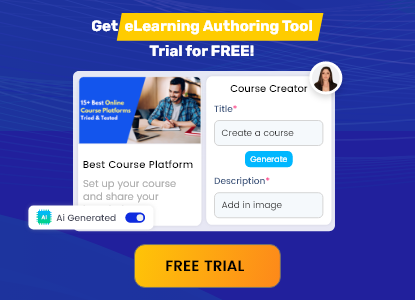Introduction
In the ever-evolving eLearning landscape, organizations and instructional designers face a crucial decision: Should they opt for rapid authoring tools or stick with traditional eLearning development? Both methods have their advantages and drawbacks, but the right choice depends on factors like budget, timelines, scalability, and learning objectives.
This blog delves deep into “Rapid Authoring Tools vs. Traditional eLearning Development“, helping you make an informed decision by understanding their key differences, benefits, and challenges. Let’s explore how each approach impacts course creation and delivery.
What Are Rapid Authoring Tools?
Rapid authoring tools are software applications designed to create eLearning courses quickly without extensive programming or multimedia expertise. These tools come with pre-built templates, drag-and-drop features, and interactive elements that simplify the course development process.
Key Features:
- User-friendly interface: No need for advanced technical skills.
- Pre-built templates: Speeds up content creation.
- SCORM & xAPI compatibility: Ensures LMS integration.
- Multi-device responsiveness: Optimized for mobile, tablet, and desktop learning.
- Cloud-based collaboration: Facilitates teamwork among developers, SMEs, and stakeholders.
Explore Further :- What is a Rapid Authoring Tool? A Complete Guide for Beginners
What Is Traditional eLearning Development?
Traditional eLearning development involves creating custom courses from scratch using programming languages, graphic design tools, and learning management systems (LMS). This approach requires extensive collaboration between instructional designers, developers, and multimedia specialists.
Key Features:
- Fully customized learning experiences: Tailored to specific training needs.
- High-level interactivity: Advanced simulations, gamification, and VR/AR elements.
- Scalability: Suitable for enterprise-level training.
- Greater control over UI/UX: Designed per branding and accessibility requirements.
- Higher initial investment: Requires skilled developers and designers.
Traditional development uses technologies like HTML5, JavaScript, Unity (for simulations), and tools such as Adobe Animate and After Effects for animations.
How Do Rapid Authoring Tools Compare to Traditional eLearning Development?
1. Which Is Faster to Develop?
- Rapid Authoring Tools: Designed for speed, enabling course creation in days or weeks.
- Traditional Development: Requires extensive planning and testing, typically taking months to complete.
2. Which Is More Cost-Effective?
- Rapid Authoring Tools: Lower cost due to built-in templates and automation, reducing development expenses.
- Traditional Development: Higher initial cost due to custom coding and specialized skills, but offers long-term value.
3. Which Offers Better Customization?
- Rapid Authoring Tools: Limited customization but sufficient for most standard courses.
- Traditional Development: Provides full creative freedom, making it ideal for unique and complex training needs.
4. Which Provides Better Interactivity?
- Rapid Authoring Tools: Supports quizzes, drag-and-drop activities, and branching scenarios.
- Traditional Development: Enables high-end gamification, VR-based training, and immersive simulations.
5. Which Is Easier to Maintain?
- Rapid Authoring Tools: Easier to update and modify without technical expertise.
- Traditional Development: Requires developers for content modifications and updates
6. Which Is Best for Large Enterprises?
- Rapid Authoring Tools: Ideal for organizations needing quick, standardized training solutions.
- Traditional Development: Best suited for large enterprises with unique, high-impact training needs
Read More :- Advantages of Rapid Authoring Tools
Key Takeaways
- Rapid authoring tools are ideal for quick, cost-effective, and standard training needs.
- Traditional eLearning development provides customization and interactivity but requires more time and investment.
- Organizations should choose based on budget, complexity, and training goals.
- A hybrid model combining both approaches can maximize efficiency and engagement.
Conclusion & Call-to-Action
Choosing between rapid authoring tools vs. traditional eLearning development depends on your training objectives, budget, and scalability needs. If you need a quick and budget-friendly solution, rapid authoring tools are the way to go. However, for unique, high-impact learning experiences, traditional development is the better choice.
Are you looking for expert guidance on eLearning development? Contact our team today to explore custom eLearning solutions tailored to your business needs!
About the author
Pradnya Maske
administrator
Pradnya Maske is a Product Marketing Manager with over 10+ years of experience serving in the eLearning industry. She is based in Florida and is a senior expert associated with Paradiso eLearning. She is passionate about eLearning and, with her expertise, provides valued marketing services in virtual training. Her background includes analyzing, designing, and developing marketing programs to grow and expand online learning programs. She is an expert in building product marketing strategies and working on market trends, competition and pricing. Her true passion lies in solving learning problems and making learning accessible to all.























